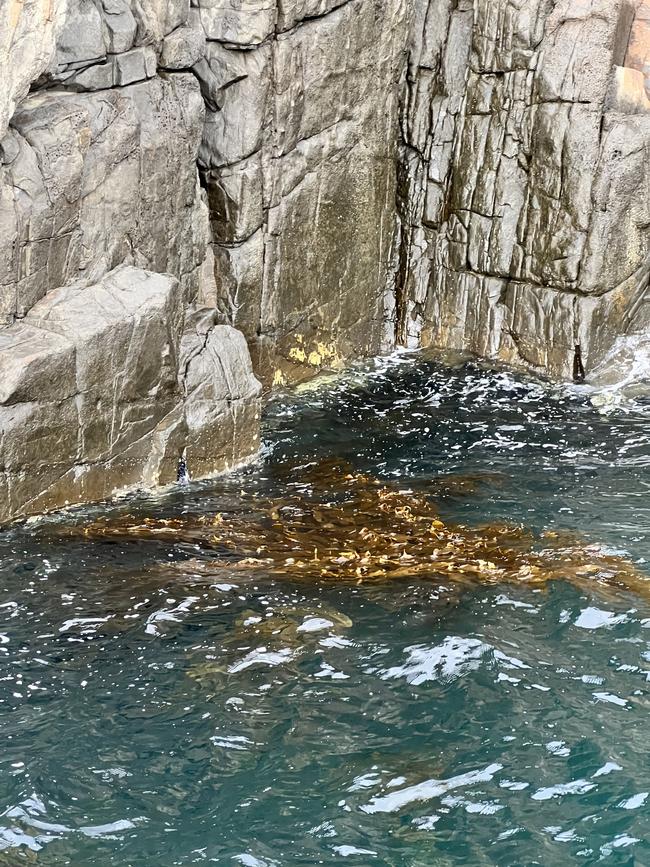Nutrients from salmon farming fuelling giant kelp ‘10 times growth rate’
Giant kelp sucking up the nutrients of fish farming could be the solution to restoring forests, with early research results revealing 10 times the growth rate.

Tasmania
Don't miss out on the headlines from Tasmania. Followed categories will be added to My News.
The nutrients produced from fish farming are fuelling Tasmania’s giant kelp, with evidence from a research trial suggesting promising solutions for forest restoration and higher quality water.
University of Tasmania’s Institute of Marine and Antarctic Studies are conducting giant kelp trials in waters off Tinderbox, with early results revealing that kelp grows exponentially when placed near fish farms.
“The problem is Eastern Tasmania was previously dominated by sub Antarctic water which was cold with lots of nutrients,” IMAS marine ecology Professor Craig Johnson said.
“In the past decades because of changes in oceanography as a direct result of climate change affecting wind patterns, the East Australian Current water, which is the hot water coming down the coast, that water is warm and completely stripped of nutrients.
“That combination, but particularly the heat, is what knocked out the giant kelp.”


Scientists working to restore the giant kelp have grown kelp from its infancy, less than a millimetre in size, up to 10m-tall in a year, with the help of fish farming.
“It’s not going to happen unless you can increase the nutrient load,” Professor Johnson said.
Looking at two sources of nutrients, scientists are researching the ammonia that comes off fish farms as a source of nitrogen and the nutrients from waster water management facilities.
“It looks like we’re getting about a 10 fold increase in growth rate by growing the same genotype of kelp next to the fish farm versus away from the fish farm,” Prof Johnson said.
“The same hatch of kelp, the same genotype, on the same coastline, same depth – everything identical except ones near the fish farm and ones away and we’re getting about 10 times the growth rate, which is just incredible.”


From there, engineers are using technology to try bring the nutrients to the kelp or take the kelp to the nutrients.
“One possibility is that we use wave energy to pump the water from 60 or 80m down and pump that water back to the surface and use the nutrients in that water to irrigate the crops on the surface,” Prof Johnson said.
“The other possibility is we drop the firm down to the bottom at night, so that it’s in the nutrient rich water and the crops will take up the nutrients at night and then you crank the kelps back up to the surface at dawn so they can use the light to photosynthesize during the day.”
The nutrients produced from salmon farming is controversial, but Prof Johnson said giant kelp will suck up the nutrients.
“The more giant kelp you grow, provided you’re sensible about the way you do it, the better your water quality will be – so high water quality, potentially biodiversity spin offs, commercial and economic benefit and this conservation benefit in restoration,” he said.
More Coverage
Originally published as Nutrients from salmon farming fuelling giant kelp ‘10 times growth rate’




